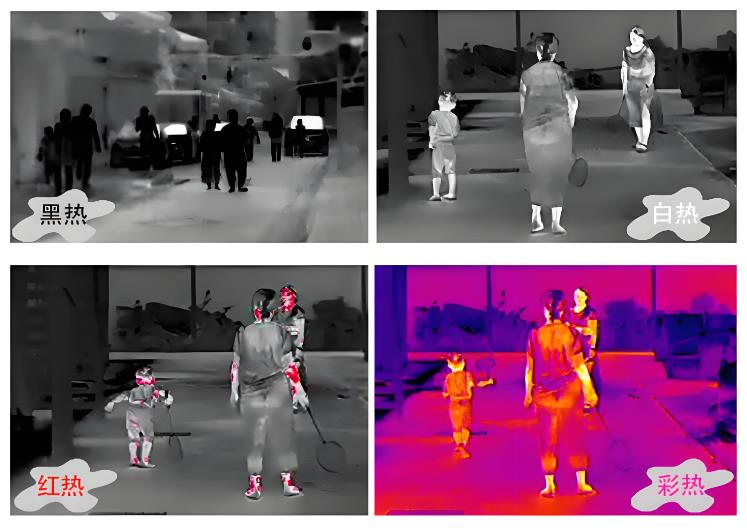Introduction
Thermal cameras, a subset of thermal imaging technology, have emerged as powerful tools in the realm of outdoor hunting. Among the various thermal imaging devices available, Thercam - branded thermal cameras offer unique features and capabilities that can significantly enhance a hunter's experience and success rate. This article explores in detail how these thermal cameras can be used to assist hunters in their pursuit of game.
Unique Features of Thercam Thermal Cameras
High - Resolution Imaging
Thercam thermal cameras are engineered to provide high - resolution thermal images. The advanced infrared sensors within these cameras are capable of detecting minute differences in temperature, translating into incredibly detailed images. For example, the high - resolution allows hunters to clearly distinguish the shape and outline of an animal, even at long distances. A deer's antlers, which may have a slightly different temperature due to blood flow, will stand out sharply against its body in the thermal image, enabling hunters to accurately identify the species and the size of the game.
Extended Detection Range
These cameras often come with an extended detection range compared to some other thermal imaging devices. Using sophisticated lens systems and powerful signal processing algorithms, Thercam thermal cameras can detect heat signatures from afar. In a large open hunting area, such as a prairie or a vast forest, a hunter equipped with a Thercam thermal camera can spot a small rodent or a distant elk much earlier than with a standard thermal scope. This extended range gives hunters more time to prepare their approach and make strategic decisions.
Customizable Color Palettes
Thercam offers customizable color palettes on its thermal cameras. Hunters can choose from a variety of color schemes that best suit their hunting environment and personal preferences. In a snow - covered landscape, a color palette that emphasizes the contrast between warm - blooded animals and the cold white snow can be selected. This customization not only improves visibility but also makes it easier for hunters to quickly identify their targets in different lighting and environmental conditions.

Hunting Applications of Thercam Thermal Cameras
Nocturnal Hunting
Nocturnal animals are a common target for many hunters, and thermal cameras are particularly well - suited for this type of hunting. Thercam thermal cameras can easily detect the heat signatures of animals that are active at night, such as raccoons, foxes, and certain species of birds. The camera's ability to function in complete darkness gives hunters a distinct advantage. For instance, when hunting raccoons near a riverbank, the thermal camera can pick up the warm bodies of the raccoons as they search for food in the dark, while the cold water and surrounding vegetation form a clear contrast in the thermal image.
Tracking Wounded Game
When a hunter wounds an animal, tracking it down can be a challenging task. Thercam thermal cameras can be invaluable in such situations. The wounded animal's body will emit heat, and even if it tries to hide in thick underbrush or behind rocks, the thermal camera can detect its heat signature. The high - resolution imaging helps hunters follow the trail of the wounded animal accurately, ensuring that they can retrieve the game and minimize the chances of it suffering and getting away.
Scouting Hunting Areas
Before a hunting trip, scouting the area is crucial. Thercam thermal cameras can be used to scout large areas quickly. Hunters can walk through the hunting grounds or use the camera from a vehicle to detect signs of animal activity. By looking for clusters of warm heat signatures, they can identify areas where animals are likely to gather, such as watering holes or feeding areas. This information can be used to plan the best hunting spots and times for a more successful hunt.
Comparing Thercam Thermal Cameras with Other Hunting Tools
Versus Traditional Optical Scopes
Traditional optical scopes rely on visible light, which means they are ineffective in low - light or complete darkness. In contrast, Thercam thermal cameras work independently of visible light, providing continuous visibility in all lighting conditions. While optical scopes may offer high - magnification views in good light, they cannot penetrate fog, light rain, or dense vegetation as thermal cameras can. For example, during a misty morning hunt, an optical scope may be rendered almost useless, but a Thercam thermal camera can still clearly show the presence of game.
Compared to Generic Thermal Scopes
Generic thermal scopes may lack the advanced features that Thercam cameras offer. The high - resolution imaging, extended detection range, and customizable color palettes of Thercam cameras give hunters a more precise and adaptable tool. Generic scopes may have lower - quality sensors, resulting in less detailed images and a shorter detection range. Additionally, the lack of customization options in generic scopes may make it more difficult for hunters to optimize their view in different hunting environments.
Conclusion
Thermal cameras, especially those from Thercam, have proven to be valuable assets in the hunting world. Their unique features, such as high - resolution imaging, extended detection range, and customizable color palettes, enable hunters to engage in more successful and efficient hunts. Whether it's nocturnal hunting, tracking wounded game, or scouting hunting areas, Thercam thermal cameras offer capabilities that traditional hunting tools simply cannot match. However, as with any hunting technology, hunters must also be aware of and comply with local laws and ethical hunting practices when using these devices.

